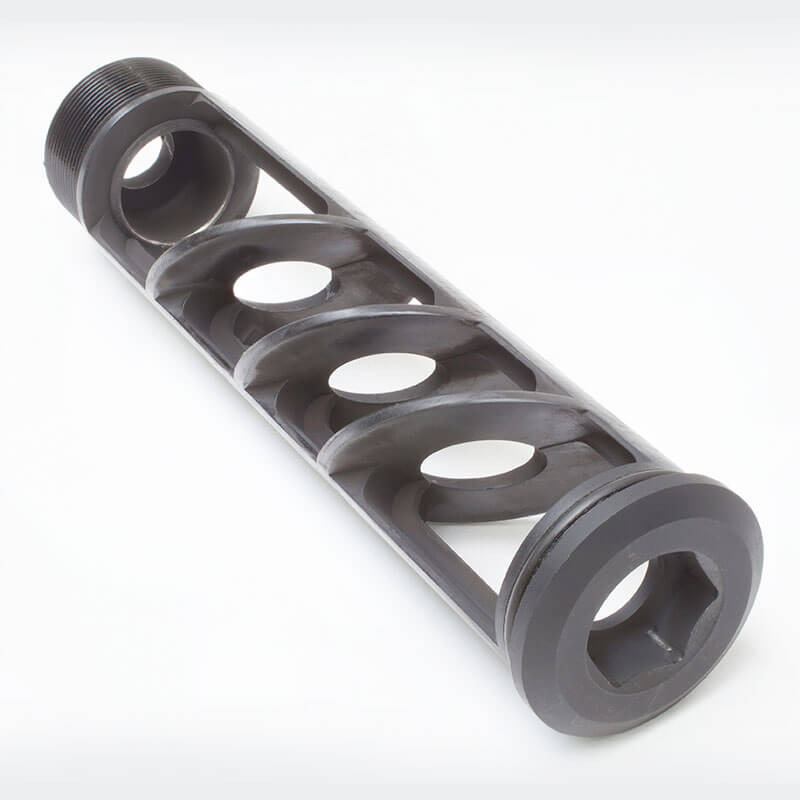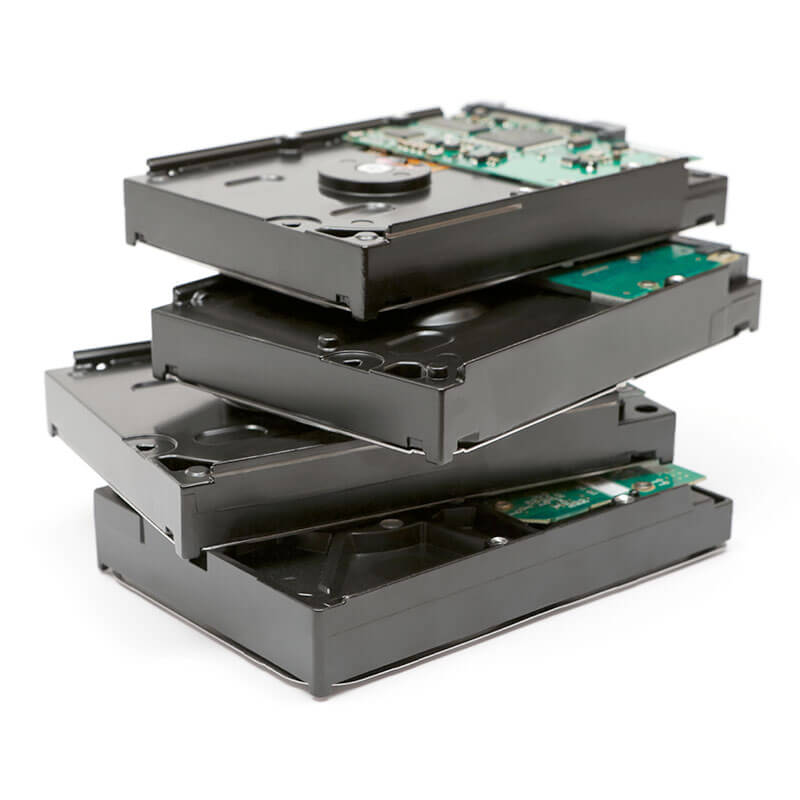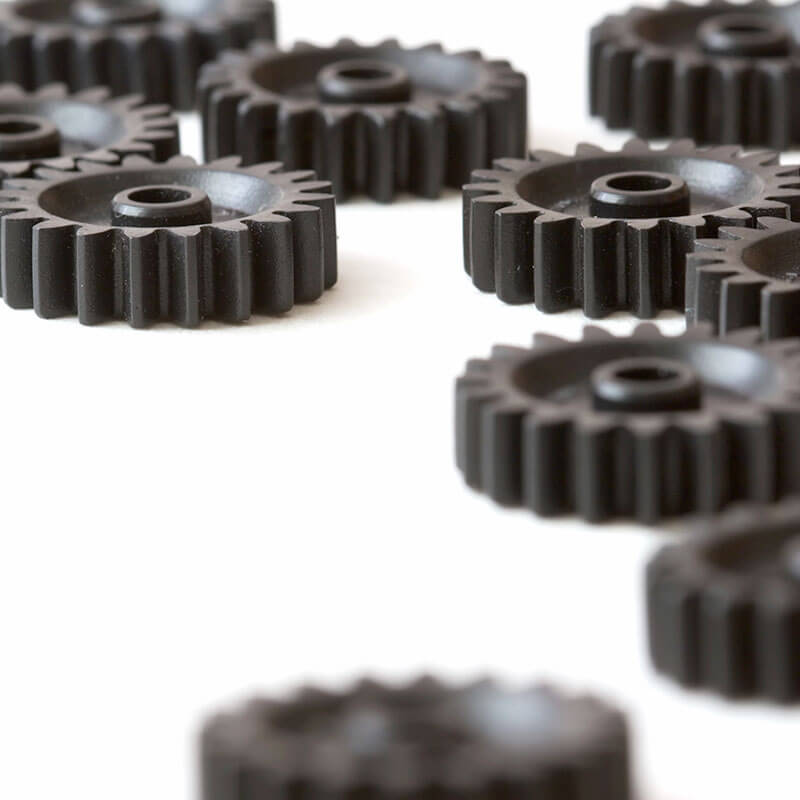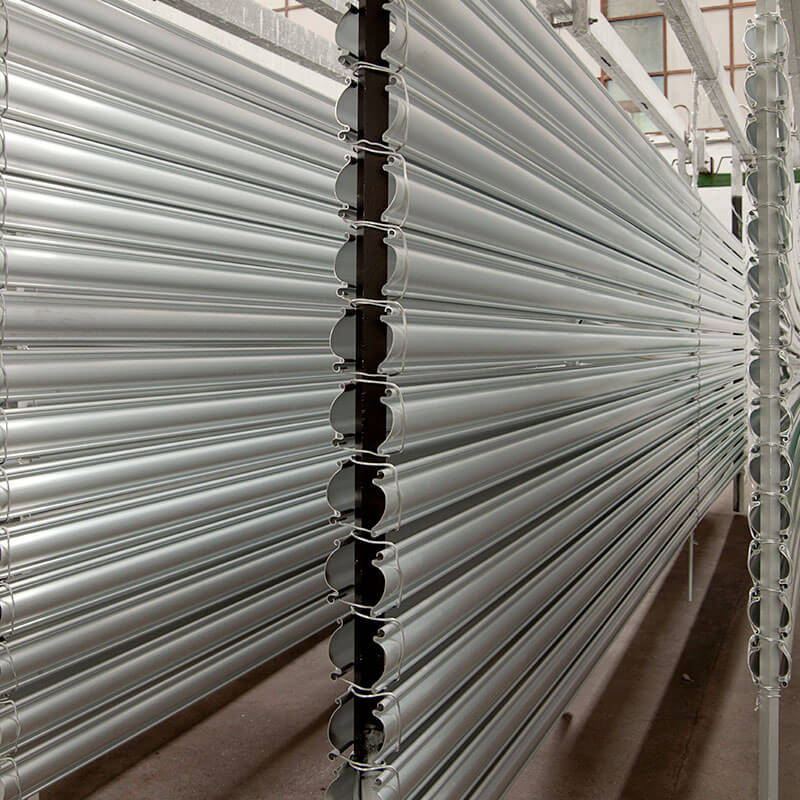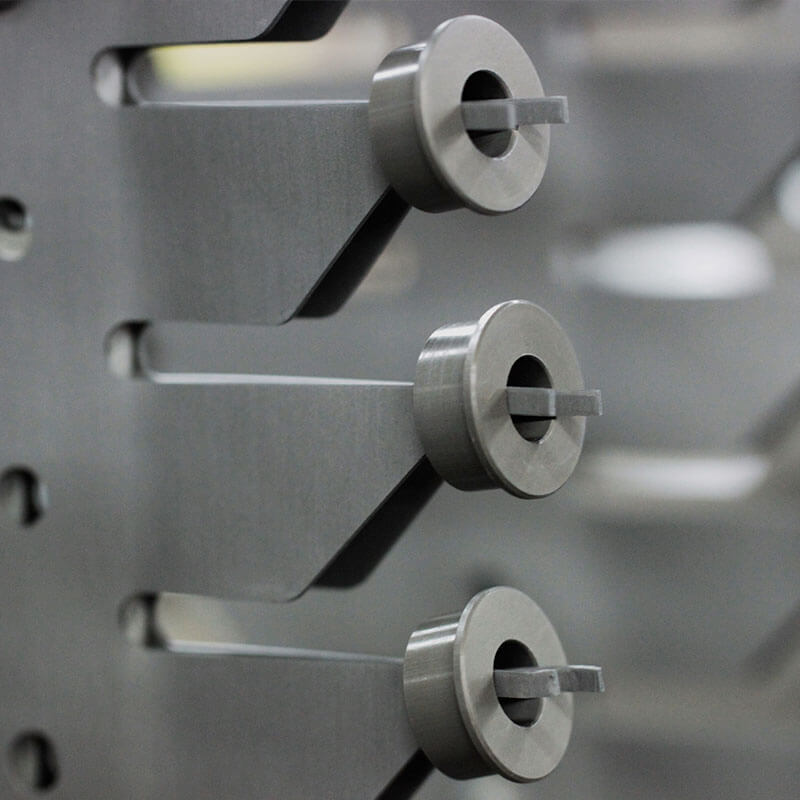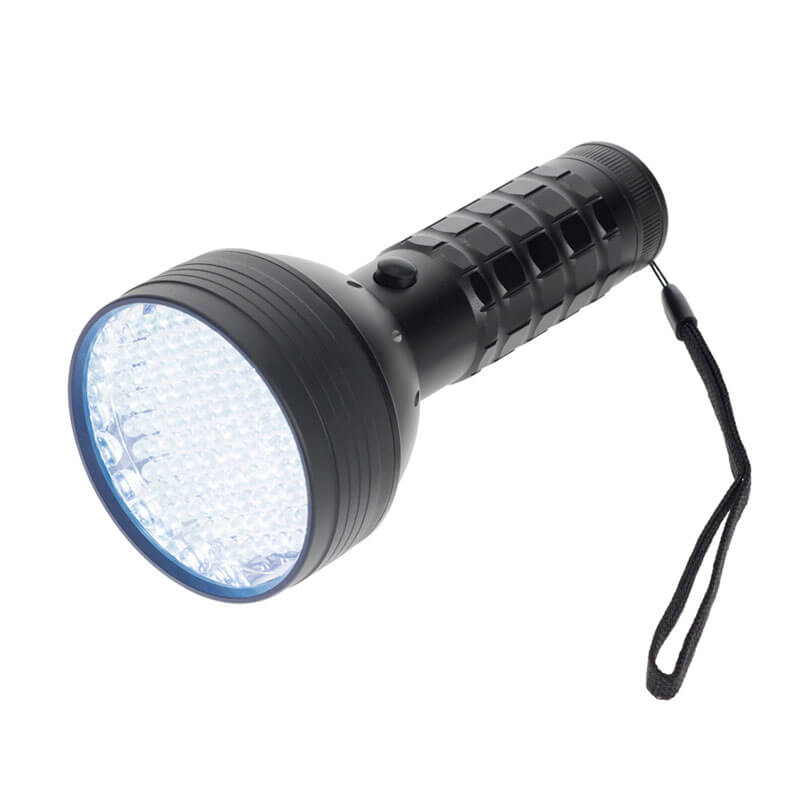
HARD ANODIZE OF ALUMINUM
Philosophy
TFC has over thirty years of experience in hard anodizing aluminum, having installed the process in 1981 in an effort to diversify its markets served. In this time, TFC has grown accustom to the intricacies and boundaries of each alloy, and the optimal conditions needed to produce a superior product while maintaining low overhead costs which can be passed on to our customers. With an emphasis on functionality of the coating, coupled with strict quality and process procedures, our hard anodize will permit the use of aluminum in applications where it would not otherwise be a suitable option.
Process
TFC’s process uses a low-voltage current and bath cooling to virtually eliminate the common problem of burning and catastrophic dissolution of customer parts to significantly improve the properties of the aluminum.
The recommended thickness for optimal hardness, corrosion protection and durability is 0.002″, with +/-.0004″ tolerance per the military specification. This thickness is 50% build up, and 50% penetration, making the coating an integral part of the base aluminum itself once completed.
Color options offered at TFC are a natural finish (no dyes used) in which the resulting color is a function of the alloy, thickness and bath temperature, or the option to dye black, as we are more focused on the functionality of the coating rather than its decorative appearance. Due to the micro pore structure indicative of hard anodize, the coating readily accepts the black dye and/or post-treatment PTFE for increased lubricity. TFC specializes in masking surfaces, threaded and reamed holes to manage any coverage areas that may be adversely affected dimensionally by the hard anodize build up at your request.
Currently, the largest working tank size available at TFC is 69″ x 48″ x 48″ dimensionally.
Benefits and Properties
Hardness
Hard anodize at its optimal 0.002” thickness, has been measured up to Rockwell 70C making the hardness of the aluminum oxide surface equivalent to the surface of case-hardened steel.
Corrosion Resistance
An exceptional means for enhancing corrosion resistance, hard anodize is highly stable and will guard well against atmospheric and salt-induced corrosion. In marine applications, hard anodized aluminum has withstood five years of immersion with virtually no effect. Hard anodize is an excellent choice if galvanic corrosion would otherwise prevent the use of aluminum in an application, as it allows for a neutral mate with dissimilar metals.
Electrically Non-Conductive
Hard anodized aluminum is widely used for its dielectric effect, and is an electrical insulator comparable to glass or porcelain. In applications where glass or porcelain would not have the strength or wear resistance to be a suitable substrate, hard anodized aluminum is an excellent alternative.
Low Thermal Conductivity
Heat transfer occurs at a lower rate across the hard anodized aluminum than it would on the bare substrate, making it a suitable thermal insulator depending on operating temperature and conditions. Hard anodized aluminum remains effective in high operating temperatures.
Workability
After hard anodize, the part may be machined, ground, honed, lapped or stripped to remove areas of the coating. Additionally, hard anodize produces a suitable base for paints, adhesives or the application of solid film lubricants without the use of a conversion coating.
Enhance with Post-Treatment Options
PTFE Teflon Impregnation for Increased Lubricity
Teflon (PTFE) can be applied to the hard anodized surface while the pore structure is still open, immediately after coating. The PTFE penetrates the surface of the hard anodize and becomes an intrinsic part of the coating. With more use, the lubricity of the coating increases creating an excellent surface for sliding part applications. Additionally, the lowered coefficient of friction helps to prevent most solid substances from adhering to the coated surface for better release.
In applications where corrosion protection trumps hardness properties of the coating, a post-treatment nickel acetate seal is an option that offers increased protection from harsher environments and provides colorfastness and retention of dye when specifying black anodize.
Nickel Acetate Seal for Additional Corrosion Protection
Mercury Free, RoHS & REACH Compliant
Specifications
- AMS 2482, Type I
- AMS 2468 & AMS 2469
- MIL-A-8625, Type III, Class 1 (Natural), Class 2(Dyed black)
- Mil STD 171, Para. 7.5.1; Para. 7.5.2
- MIL-A-63576A, Type I
- ASTM-B580-79, Type A
Features
- Hardness Values of 70 Rockwell C
- Corrosion Protection
- Increased Wear Resistance
- Excellent Insulator
- Effective in Operating Temperatures of over 500℉
- Galvanic Neutrality
Typical Applications
- Aerospace & Aviation
- Automotive & Racing
- Consumer Products
- Electronics
- Firearms & Sporting Goods
- Food Processing
- Gears
- Hinges & Joints
- Machinery Components
- Marine & Boat
- Medical & Dental Equipment
- Military
- Molds & Dies
- Optics
- Rails & Transportation
- Repair of Undersized Dimensions
- Pistons
- Pumps & Valves
Substrates
Virtually all aluminum alloys, including:
- 1100 Series
- 2000 Series
- 3000 Series
- 5000 Series
- 6000 Series
- 7000 Series
- Tool & Jig Plate
- Aluminum Castings
- Titanium parts with IVD Aluminum Coating per MIL-DTL-83488
HARDCOAT ANODIZING OF ALUMINUM
